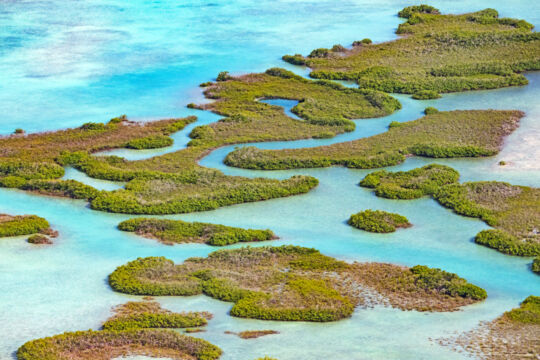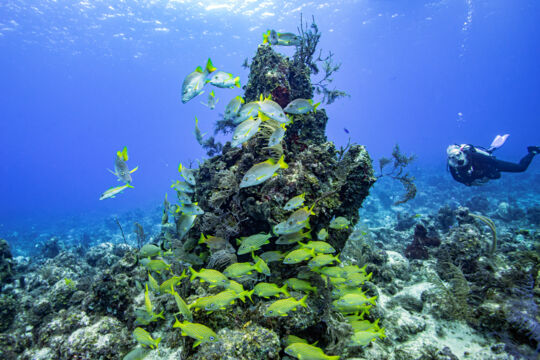Turks and Caicos Guide for Digital Nomads
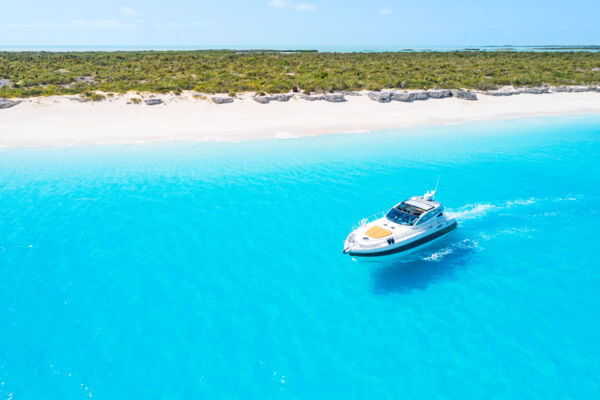
The Turks and Caicos is not a popular destination for digital nomads and remote workers. This is generally due to high costs, which can be triple those of other popular destinations like the Mexican Caribbean, Dominican Republic, and southern Spain. The country does have some advantages compared to other destinations, including that it is English-speaking, uses the US dollar and East Coast time zone (same as New York), and boasts a spectacular marine environment.
The Basics
While the country is a British Overseas Territory, its immigration law is completely separate from the United Kingdom (British citizens do not have any rights above other nationalities). The country speaks English and uses US currency and power plugs (type A). Although we drive on the left, the islands have become quite Americanized.
Cash is widely accepted along with cards. Some places require a minimum sum to use a card ($10–20). ATMs are frequently offline. This is also the case with card machines at businesses. As such, you’ll need to carry at least some cash.
The tap water is safe to drink but has a high salt content (around 400 ppm), which is above the recommended sodium content for drinking water by some agencies.
Length of Stay and Residency
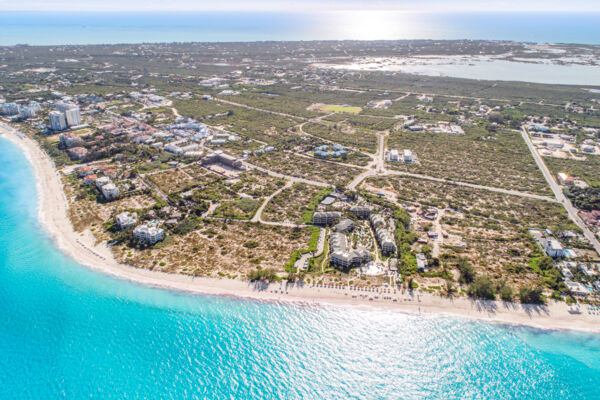
There is no scheme dedicated to digital nomads, such as those that exist in Barbados, Indonesia, and Portugal. Visitors are granted entry for up to 90 days, and your passport will be stamped with your departure date. It’s possible to get an extension by visiting the local immigration department or paying an agent to handle it on your behalf.
It’s important to note that immigration officers won’t always stamp your passport for more than 30 days. For example, even if you arrive with an onward ticket for two months from now, it’s common to only get a 30-day stamp. In this case, you need to get a visitor extension, which is usually granted.
For those looking to stay longer, it’s possible to get residence permits (without the right to work) for around $2,000 per year. These require a lot of paperwork (proof of funds, full medical evaluation, etc.) and you’ll need the services of an agent to handle it on your behalf. Technically, any sort of work is prohibited on a residence permit, even working for your own company. However, difficulties with tracking and enforcement mean that remote working in the Turks and Caicos isn’t policed.
It’s strictly prohibited to work for a local business whilst on a residence permit, including out-of-office work such as social media management, graphic design, and so on.
Another option is to get a self-employed Turks and Caicos work permit. These cost $9,500 per year and require you to set up a local Turks and Caicos business.
Costs
Once both accommodation and general day-to-day expenses are factored in, the Turks and Caicos is quite expensive. It is at least on par with major international cities and is certainly not a cheap destination for digital nomads.
Basic accommodation is $100–$200 per night for mid- and longer-term rentals. A basic lunch from a cheap restaurant is $20.
Safety and Crime
Unfortunately, crime has increased in recent years. For more information on crime in the Turks and Caicos, see Safety and Crime.
Islands and Neighborhoods
The overwhelming majority of overnight visitors stay on Providenciales, where most of the population lives. Grand Turk is home to a cruise port and has the second largest population after Providenciales.
For most remote workers and digital nomads, Providenciales is the best choice. The other islands (North Caicos, Middle Caicos, South Caicos, and Grand Turk) are destinations for those truly looking for an off-the-grid experience. These islands generally have little tourism (apart from the cruise crowds of Grand Turk), limited dining options, and few things to do apart from nature-related activities like hiking and water sports. Free Wi-Fi is harder to find. While lodging can be cheaper on the other islands, nearly everything else is more expensive.
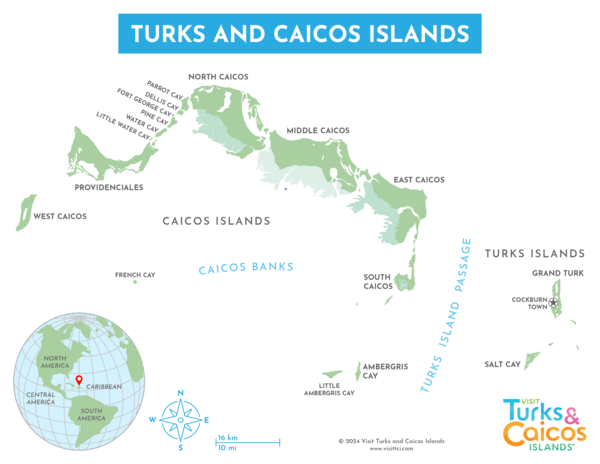
Within Providenciales, most digital nomads and remote workers will want to stay on the eastern part of the island in areas like Grace Bay, Leeward, Long Bay, Venetian Road, and Turtle Cove. Other parts of the island, particularly the further west you go, suffer from low-infrastructure investment by the Turks and Caicos Government and traffic problems. An exception is Chalk Sound, which is a wealthier residential neighborhood. However, it doesn’t have much in terms of dining options or things to do.
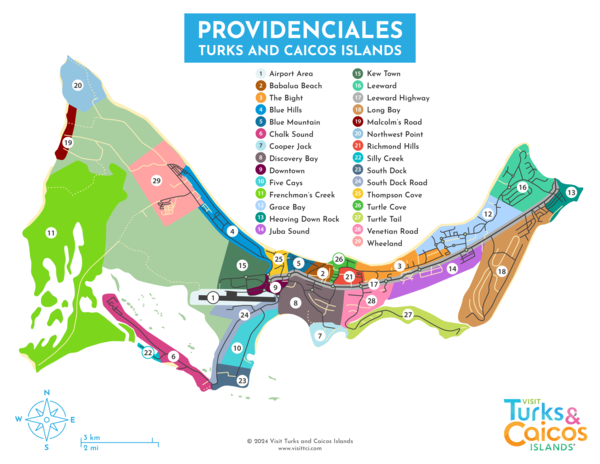
Transportation
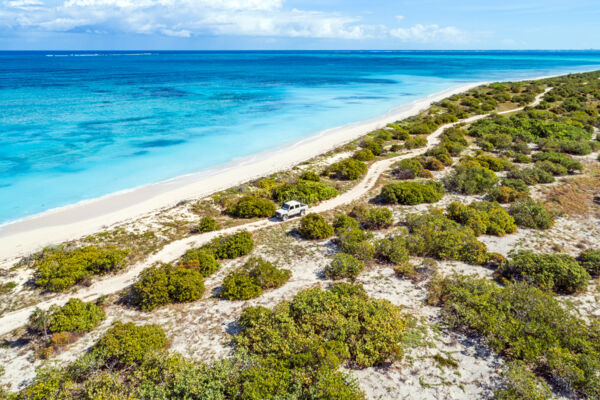
If you are spending any amount of time in the Turks and Caicos, you’ll want a rental car. Taxis are very expensive (a 10-minute ride will cost at least $30), and there is no public transportation.
Jitneys (essentially cheap sedans that function as shared taxis) are an unregulated form of transport. Do not use jitneys—they are unlicensed and uninsured, and there are frequent reports of jitney drivers assaulting and robbing passengers.
It is not recommended to cycle in the Turks and Caicos, especially outside of central Grace Bay. There are no bike lanes, and many drivers in the Turks and Caicos are unlicensed and others simply do not know how to drive and the rules of the road. This is compounded by many inconsiderate and dangerous drivers (the Turks and Caicos has a very high road fatality rate). In addition, the sun can be extremely intense at times and difficult to handle for people not used to the climate.
There is no Uber/Lyft or other ride-sharing service in the islands.
Inter-Island Domestic Transport
It’s generally easy to travel between the islands, although local flights are rather expensive when factoring in the short distances. A ferry connects Providenciales to North Caicos, and separately Salt Cay to Grand Turk. Flights connect Providenciales, South Caicos, Grand Turk, and Salt Cay.
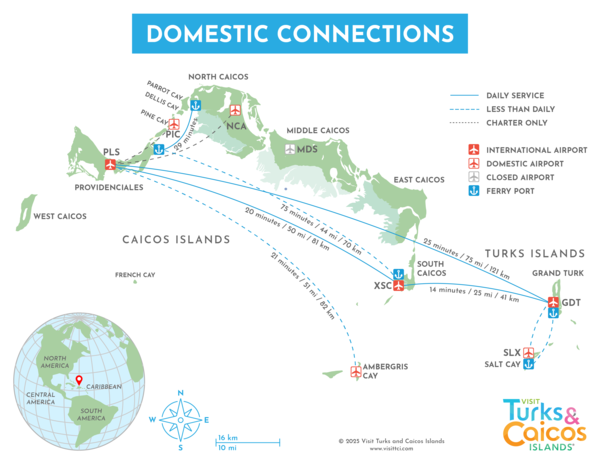
Regional Flights
Nearly all international flights to the Turks and Caicos land on Providenciales. Flights are offered to Providenciales from the United States, Canada, the United Kingdom, the Bahamas, Jamaica, the Dominican Republic, and Haiti.
The only other airport in the country with scheduled international flights is the South Caicos Airport (XSC), which welcomes a Miami to South Caicos flight via American Airlines twice weekly.
When to Go
The least expensive time to visit is the slow season, from September through the end of November (right before American Thanksgiving).
Hurricane season runs from June through November, with September being the most active month.
For more information about specific weather by month, see Best Times to Visit.
Finding Accommodation
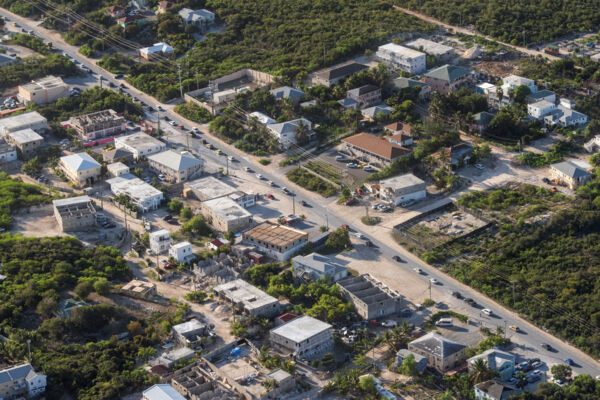
Unfortunately, accommodation is quite expensive in the Turks and Caicos and frequently ranks amongst the most expensive islands in the Caribbean. This is due to both high demand (from visitors and residents) and short supply.
The best way to find accommodation, especially for shorter durations (such as under three months) is still the usual places, such as our accommodation finder or sites like Airbnb. Ad-hoc Facebook groups exist, but these are primarily geared to the local market and long-term rentals.
Expect to pay $2,500 to $6,000 per month for a studio or one-bedroom apartment (sometimes a two-bedroom apartment, if not central) on Providenciales. You can find the lowest prices between September and the end of November and by searching for places outside of central Grace Bay. During the busiest months (January-March), you will be hard-pressed to find a place for under $2,500 anywhere on the island. Hotels and resorts are generally more expensive than typical apartment rentals.
Things to Do
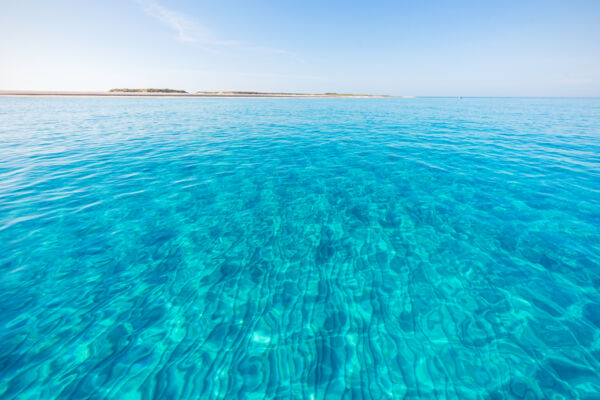
There are not many organized events in Turks and Caicos. Common event platforms, such as MeetUp or InterNations, don’t have any communities organized in the Turks and Caicos, and thus no events.
There are of course the typical tourist-orientated events, such as the Fish Fry or karaoke night at local pubs, but nothing in the way of organized events for expats.
Expats, however, are not difficult to find here—an estimated 70% of the population of the Turks and Caicos is foreign-born.
Water Sports
Many people staying on Providenciales for more than a week or two try their hand at one of the many available water sports, such as paddleboarding or kiteboarding. If you visit during the slow season, you’ll be able to get significantly better rates for training and equipment rental.
What to Pack
The Turks and Caicos Islands is not a good location for shopping, specifically for clothes and electronics. Bring or purchase any clothes you will need before arriving. There is no need for cold-weather clothes, as it is warm here year-round.
The postal service is extremely poor. You’ll need to use a courier service, such as DHL, FedEx, or UPS, for anything you’ll be sending or receiving. If you’re staying longer-term, there are local freight forwarder services. These services collect packages that you send to an address in Florida, then consolidate and ship them to the Turks and Caicos. This is considerably cheaper than a courier service, but often takes longer. Expect a two-week delay from delivery in Florida before it’s available for collection on Providenciales.
Where to Eat
Providenciales has a multitude of restaurants. Costs are similar to US cities, and there are not many low-cost options. For low-cost dining options, Graceway IGA has a prepared foods/cafeteria/sandwich counter, which is the most reasonable choice in Grace Bay.
Telecommunications, SIMs and eSIMs, and Internet
Most accommodations provide internet service, although speeds vary. Many connections are fiber, and most rental properties will have speeds of 50 Mbps and above. Local internet service providers offer connections of up to 1 Gbps.
It’s possible to buy an eSIM from providers such as Airalo. However, for best value, you’ll want to purchase a physical SIM (or eSIM) from a local service provider. Digicel offers monthly pay-as-you-go plans incorporating around 8 GB of mobile data, unlimited on-network calls, and a few hundred minutes for calls to other local mobile and landline providers. Flow offers similar pay-as-you-go packages and sells eSIMs.
Co-Working Spaces
There is only one dedicated co-working space on Providenciales: On Island. Located in central Grace Bay, they offer the usual range of services, such as high-speed Wi-Fi, printers, call booths, and a shared working environment. Occasionally, they host networking events.
Cafés
Providenciales is home to several cafés that are sometimes popular with remote workers. Lemon 2 Go, Beans & Leaves, and Shay Café offer both indoor and outdoor spaces to work. The indoor space is not large at any of these cafés, so there may not always be a free table. Tribe at Ports of Call has covered, open-air style seating. All of these are located in central Grace Bay.
Health and Medical Facilities
Providenciales and Grand Turk have relatively new and modern hospitals. The other major islands either have small clinics or no health services at all.
It’s recommended that you purchase and hold medical insurance for your stay. The costs at the local hospitals are generally reasonable, however, for any serious cases, persons are medevacked out of the country to a nearby country with better medical facilities, and these costs can be high.


